Can I Bury a Shipping Container: Understanding the Pros, Cons, and Procedures
Burying a shipping container is a concept that often intrigues individuals looking for a cost-effective solution for building subterranean storage or shelter. On the surface, shipping containers may seem like a robust and ready-made option due to their sturdy appearance and the ease with which they can be modified and transported. However, the reality of burying these containers is far more complex than it initially appears.
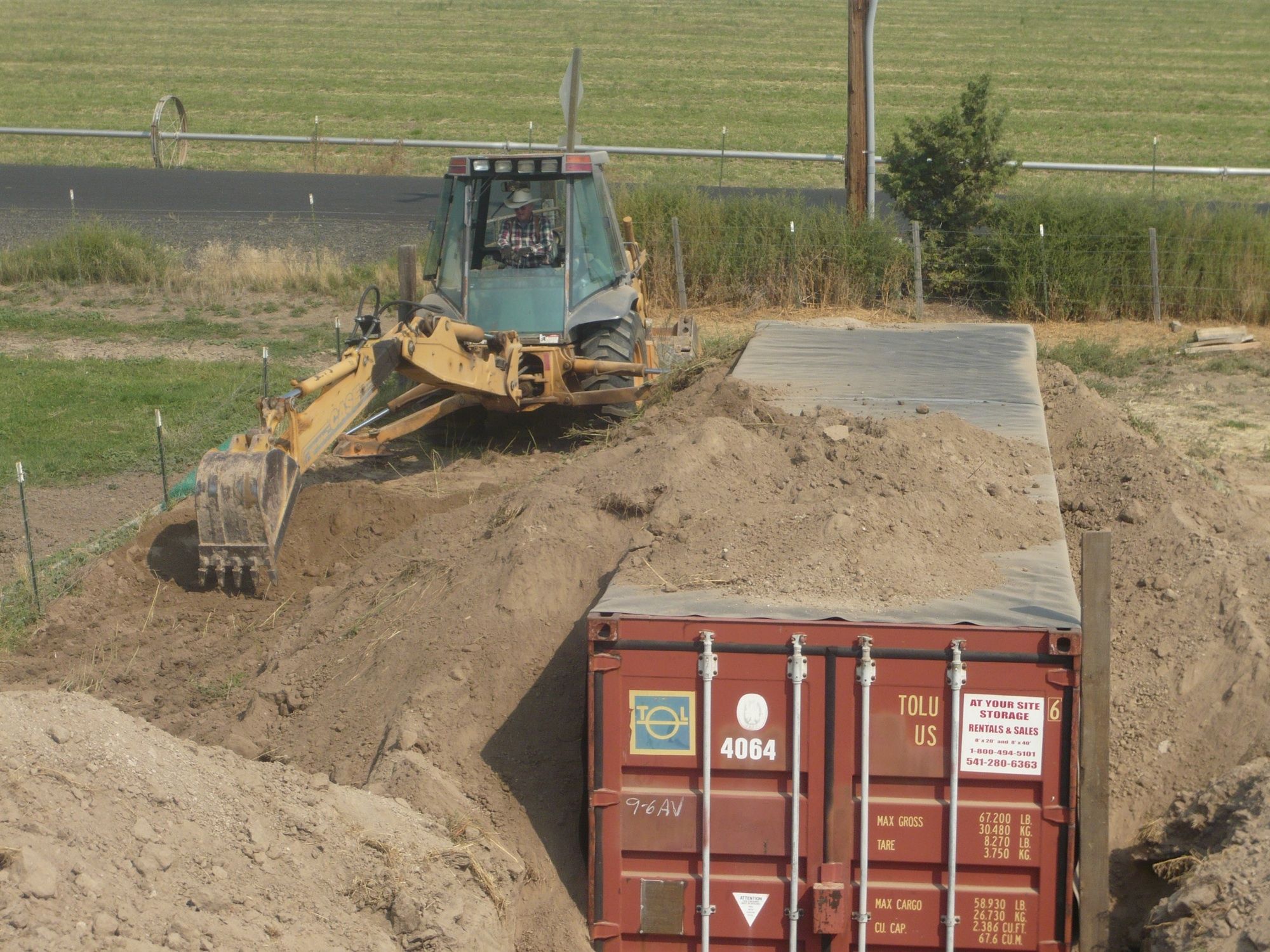
The structural integrity of a shipping container is designed primarily for bearing loads across the four corner posts, not for withstanding the lateral pressures exerted by soil. This means that when placed underground without proper reinforcement, a shipping container may be at risk of collapse under the weight of the earth above it, especially over time. Burying a shipping container safely requires thorough planning and reinforcement.
Incorporating information from various sources provides insight into the challenges and considerations of this endeavor. It’s noteworthy that professionals and enthusiasts caution against the practice unless specific steps are taken to reinforce the container. For instance, there’s emphasis on the danger of undertaking such a project without recognizing the potential hazards and necessary modifications, as detailed in an overview by ContainerAuction.com on how to safely bury a shipping container.
Understanding Shipping Containers
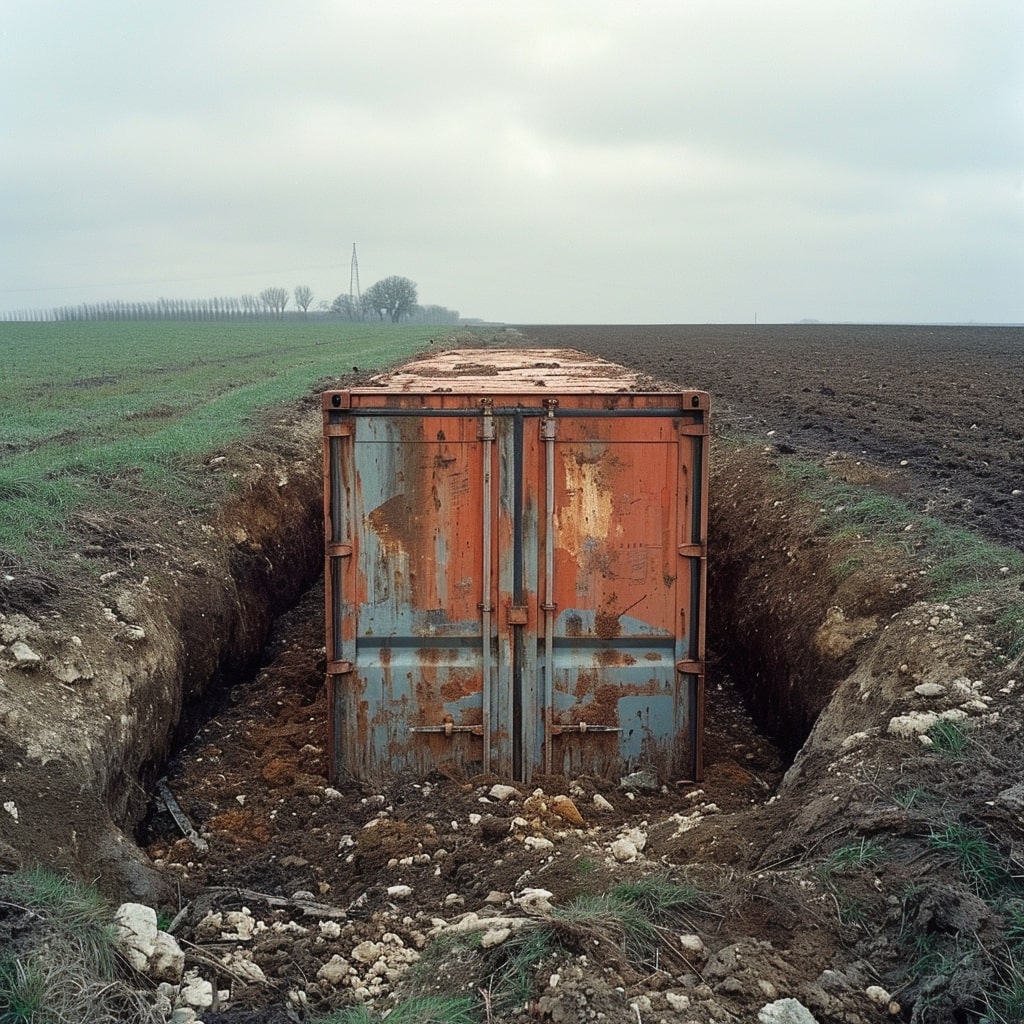
In the realm of transport and storage, shipping containers are key players—crafted from durable materials to endure harsh conditions on land and sea. They represent a standardized format for shipping a wide range of goods globally.
Characteristics of Containers
Shipping containers are predominantly made from corrosion-resistant steel, designed to withstand the elements and heavy loads. They can range in weight from 1.8 to 4.2 tons, depending on the size and specific build. The containers also feature standardized measurements, ensuring compatibility across different transportation modes, from cargo ships to truck beds and trains.
Types and Sizes
There are various types of shipping containers, but the most common are the 20′ and 40′ length containers.
The 20′ standard container, also known as a twenty-foot equivalent unit (TEU), is 20 feet (6.1 meters) long, 8 feet (2.44 meters) wide, and 8.6 feet (2.59 meters) high.
A 40′ container, or forty-foot equivalent unit (FEU), doubles the length without altering the width or height, providing twice the volume of the TEU.
Variations include high-cube containers, which offer increased internal height for tall cargo, and specialized units with modifications such as copper mesh for RF shielding or refrigerated walls for temperature-sensitive items. These containers present flexible solutions for a multitude of shipping needs.
Planning Your Burial Project
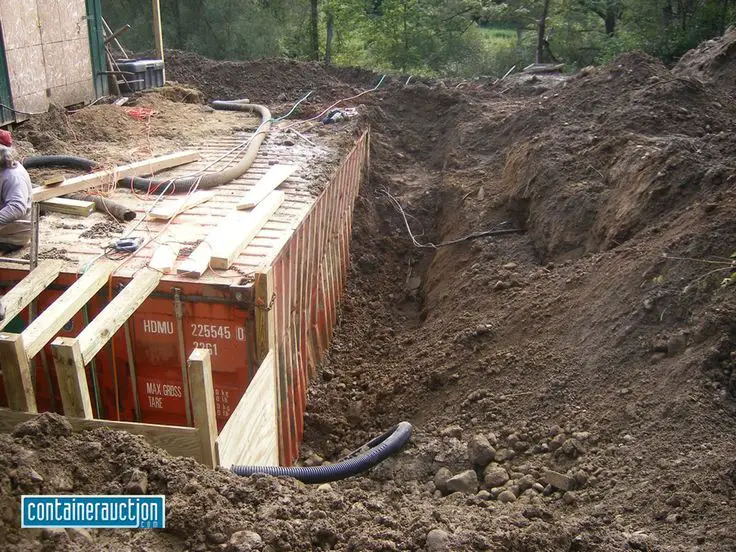
When contemplating the burial of a shipping container, one must thoroughly assess the legal framework, pick an appropriate site, and meticulously plan the design of the underground space. This will ensure the project adheres to regulations and achieves functional safety.
Legal Considerations
Before embarking on the project, obtaining the necessary permissions is a crucial step. One should investigate local and state zoning laws that pertain to burying structures. Some regions may require specific approvals or have outright prohibitions, which could considerably affect project feasibility.
Site Selection
Selecting an optimal site involves considering the soil type and the presence of a high water table, which can greatly influence the integrity of the buried container. Conduct a soil test to ensure the site can withstand the added weight and pressure. Accessibility is another factor; the site must be reachable by truck to transport the container and any required tools for excavation.
Designing Your Burial Space
The next phase is to design the buried space, keeping in mind the structural limitations of shipping containers. They are not typically built to withstand the pressure from surrounding soil, especially when buried. Reinforcement may be necessary to prevent collapse. Moreover, consider how equipment like a car or other tools will be used in the creation of access points or escape routes.
Construction and Reinforcement
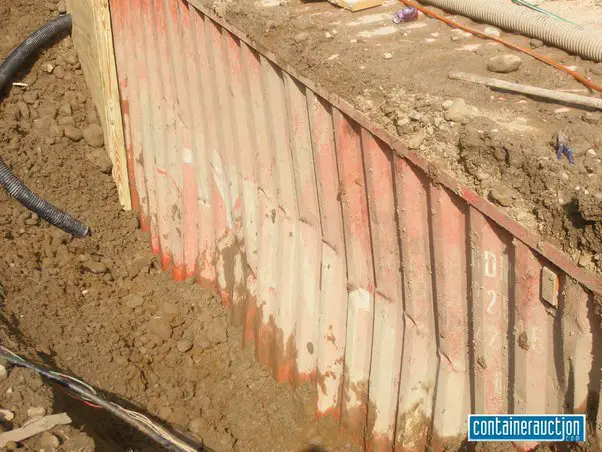
When modifying a shipping container for underground use, it’s critical to reinforce the structure to withstand substantial pressure. Ignoring this can result in collapse as containers are designed for different stress loads.
Reinforcing Techniques
Reinforcement entails adding strength to the shipping container to handle the load from the earth when buried. Typically, steel bars are welded along the interior of the container, focusing on areas prone to pressure such as the roof and sides. Additionally, a wooden floor may be reinforced with concrete for added rigidity and bear the load.
Addressing Pressure Issues
The principal challenge when burying a shipping container is the lateral pressure exerted by the soil, especially when moisture is present. Over time, this pressure can cause the sidewalls to buckle. Strategically placed reinforcements, like cross beams within the container, can help curb this issue and distribute weight more evenly, mitigating risk of buckling.
Use of Gabion Baskets
Gabion baskets, or cages filled with stones, are an external reinforcement method. They serve as a pressure distribution layer around the buried container, and their weight helps stabilize the underground structure. By placing these gabion cages along the exterior, the load spread over the container is more manageable, preventing inward collapse.
Potential Uses for Buried Containers
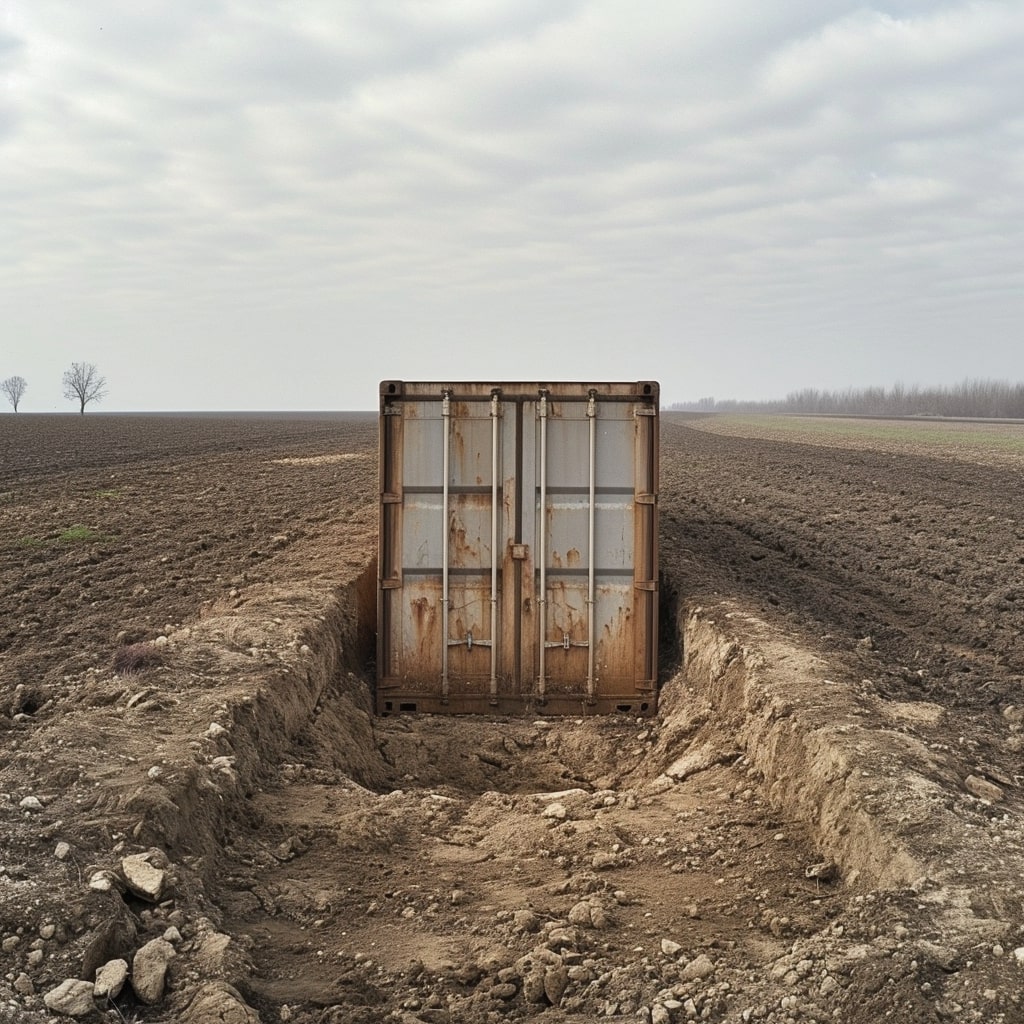
Buried shipping containers offer versatile solutions for various needs, ranging from emergency shelters to innovative living spaces. Their robust structure and modifiability cater to those looking for durability and security underground.
Survival and Security
Buried containers can be transformed into survival bunkers or storm shelters. These structures provide a secure place during extreme weather events or unforeseen emergencies. For instance, during SHTF (shit hits the fan) scenarios, a container reinforced as a bunker can offer a protected space that’s impenetrable to many types of dangers.
Storage Solutions
When considering underground storage, buried shipping containers serve as excellent root cellars where temperature and humidity remain fairly constant. This is ideal for storing crops, wine, or other perishables. Beyond agriculture, these containers can be used as secure storage for important documents or valuables, ensuring safety from theft or natural disasters.
Alternative Living Spaces
For those exploring alternative living spaces, buried shipping containers provide an option that’s both unconventional and eco-friendly. Given the proper reinforcement and modification, these containers can be converted into subterranean homes, offering a unique living experience with added thermal efficiency due to the surrounding earth’s insulation.
Incorporating these containers into the ground requires careful consideration of structural supports and waterproofing techniques to ensure the long-term stability and habitability of the constructed space.
Safety and Maintenance
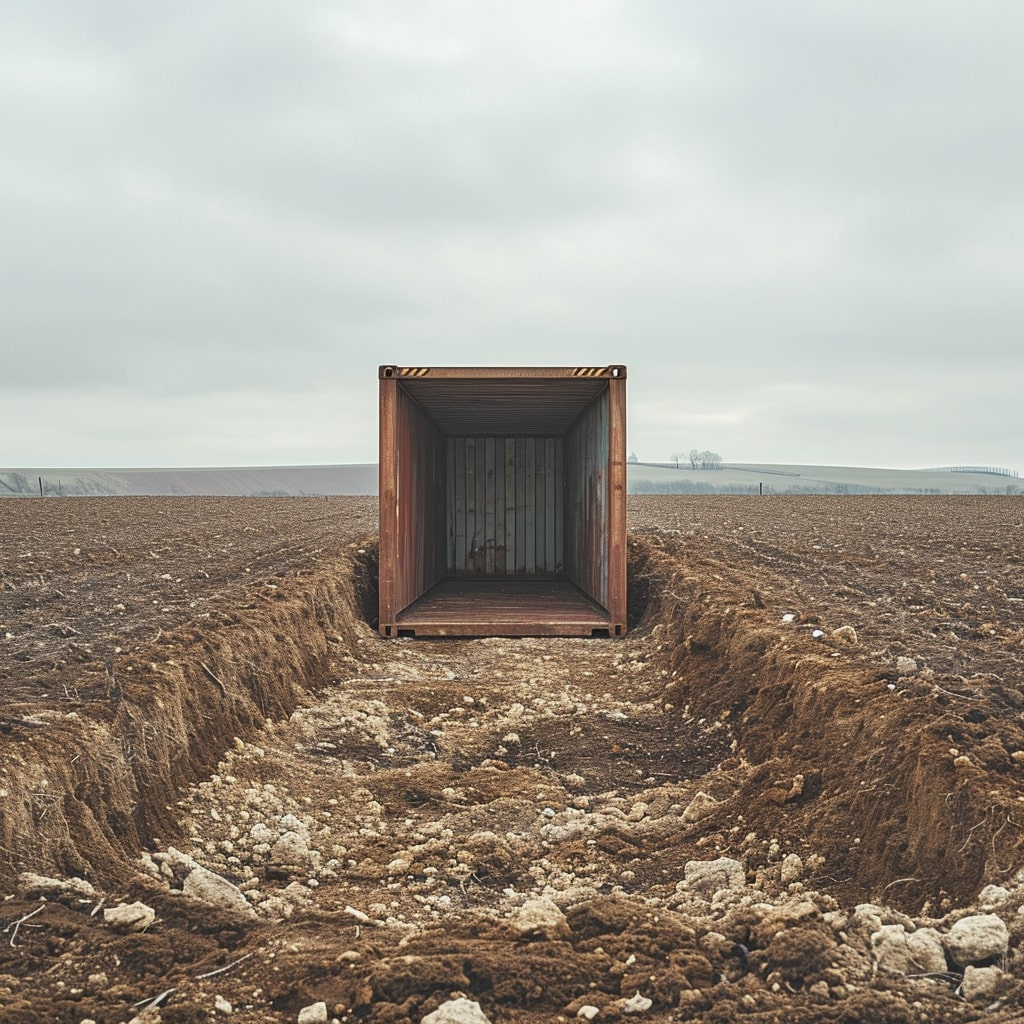
When considering the burial of a shipping container, safety and maintenance are imperative. The integrity of the container is jeopardized both during and after the burial process due to specific risks, and to combat these, diligent structural maintenance is required.
Risks and Dangers
Burying a shipping container is not without its risks. The most significant danger is the potential for the container to collapse under the weight of the earth, as they are designed to withstand loads on the corner posts but not from the sides or top. This can lead to catastrophic collapse which is dangerous for anyone inside or around the structure. Furthermore, the enclosed nature of a buried container makes it susceptible to rust and mold growth, which not only weaken structural integrity but also can pose health hazards.
Structural Maintenance
To prevent deterioration and ensure longevity, structural maintenance should focus on reinforcing the shipping container. It is essential that one reinforces the roof and walls, which are not straight after the burial, to better distribute the weight of the soil. Measures such as adding additional support beams inside the container, especially around the corner posts, can be crucial. Consistent inspection and maintenance are needed to address rust and mold, which might require applying protective coatings and ensuring adequate ventilation inside the contained space.
Technologies for Added Protection
When burying a shipping container, employing technologies for added protection against environmental pressures and electromagnetic interference ensures longevity and safety. Specific measures can enhance the container’s integrity, making it suitable for various uses, including safe storage or even habitable spaces.
Creating a Faraday Cage
A Faraday cage can shield the container’s contents from electromagnetic pulses (EMP) by dispersing energy along the cage’s exterior. Using copper mesh or copper braiding to envelope the shipping container is critical; it must be grounded properly to function as an effective Faraday cage. This EMP-proof approach involves meticulous installation to ensure that current does not penetrate the interior.
Sealing and Insulation
Achieving an airtight and watertight environment within a buried shipping container requires high-quality sealing. Utilizing specialized sealants and weatherproofing materials helps prevent moisture ingress and associated challenges. Insulation not only maintains internal temperature stability but also adds structural rigidity. Materials like foam or fiberglass are common choices, as their insulative properties pair with necessary durability.
Additional Modifications
The buried container may require additional modifications for stability and functionality:
- Welding: Reinforcing weak points particularly at seams and joints, with proper welding techniques ensures the container can withstand earth pressures.
- Reinforcing: Structural modifications, such as installing additional steel beams or supports, maintain the container’s shape and integrity against the weight of the soil.
- Communication: If the container serves as an operational space, incorporating communication lines that are protected against EMP and other interferences is vital. This often involves installing shielded conduits and ensuring all entry points are effectively sealed and grounded.
